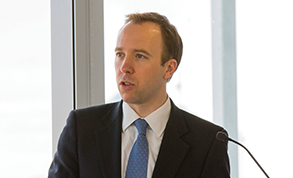Plan promises five-year rolling programme of capital investment
As the Conservative party conference opened in Manchester on Sunday, prime minister Boris Johnson said the green light was being given to build 40 new hospitals over the next decade at a cost of £13bn – describing it as the biggest hospital building programme in a generation. Although the NHS does not yet have a long-term capital settlement in place – currently it only has a published capital allocation for 2020/21 – the Department said this would be addressed by a multi-year settlement at the next capital review.
Six trusts – including Barts Health NHS Trust and Leeds Teaching Hospitals NHS Trust – have been given the immediate go-ahead and will collectively receive £2.7bn in funding to develop new hospitals over the next five years as the first phase of this plan.
Twenty-one further schemes will form phase two, delivering new hospitals between 2025 and 2030. These trusts will share in £100m of seed funding to support planning, design work and business case development. These 21 schemes involve 34 new-build hospitals with a number of trusts redeveloping multiple sites.
While projects for the first two phases have been chosen from priority projects already in the pipeline, projects for a third phase (HIP3) – 2030-2035 – will be chosen using an open consultation.
The announcement comes on the back of an August announcement of a £1.85bn increase in capital spending – £1bn in the current year (through an increase in the capital departmental expenditure limit, CDEL) and £850m, spread over five years, to support 20 hospital programmes.
Confirming these figures, September’s spending round also announced that £250m would be spent over the next three years on artificial intelligence (AI), while the Department has subsequently highlighted £200m of new funding to replace MRI machines, CT scanners and breast screening equipment.
Health secretary Matt Hancock (pictured) said the new hospitals would all be built on the government balance sheet using taxpayers’ money. ‘The Treasury is committed to supporting these projects,’ he told the Sky News channel. ‘The government is giving the go-ahead to all 40 and giving the money immediately to the first six.’
No changes have yet been made to the CDEL figures unveiled in September’s spending round. The spending round adjusted the 2019/20 CDEL to £7bn and set the 2020/21 limit at £7.1bn. If the six hospital projects require capital spending in the next 18 months, it would count against these totals. And without further CDEL adjustments in these years, this would reduce the capital spending permitted outside of these schemes.
In an introduction to the published plan, Mr Hancock said that where budgets have not yet been settled, the government has committed to the Department receiving a multi-year settlement at the next capital review. And the HIP clearly states that the published CDELs for 2019/20 and 2020/21 ‘exclude the additional funding announced with this plan’.
However, in a series of tweets, NHS Providers’ chief executive Chris Hopson called for confirmation of the full 2020-25 capital allocations and the phasing. ‘If for example, the £2.7bn phasing is equal across the years (it won’t be), we’d want to confirm that the 2020/21 total NHS CDEL allocation was at least c£550m more that the current planned figure and the rest of the £2.7bn was reflected across the period,’ he said.
Mr Hopson said until there was confirmation in a ‘treasury red book type document’, it was possible the £2.7bn could come from the existing baseline. He described the funding for the 21 additional projects as ‘less definitive’ and again said the service needed to see these promises translated into firm capital allocations. ‘This is one of the reasons why we are calling for a clear, definitive, multi-year NHS capital settlement,’ he said. (See Capital clamour).
Niall Dickson, chief executive of the NHS Confederation, said the announcement was a ‘further step in tackling one of the largest areas of unfinished business following last year's new funding settlement’. That settlement did not include capital funding and other key areas of expenditure and the recent spending round has only filled in the blanks for one further year.
‘While this extra investment is very welcome, it represents the start and not the end of what is required,’ he said. And he added that mental health and community services also needed investment.
The published plan insists that the HIP is not solely focused on hospitals. ‘It is also about capital to modernise mental health facilities, improve primary care and build up our infrastructure in interconnected areas such as public health and social care,’ it said.
The HIP also promises a reformed system for allocating capital. This will include:
- A clear definition of how capital expenditure will be financed at each level, and clarification of the availability/rules around providers’ access to other sources of finance
- Clearer and more transparent links between local level spending plans and national level spending limits, through the use of capital envelopes derived from total CDEL allocation
- Improved certainty for planning with indicative multi-year capital envelopes for systems to plan against.
Budget allocations will be split into NHS and non-NHS sectors confirmed in advance of each financial year, with NHS allocations split into three main themes. This will involve two separate allocations for NHS providers, with system-driven programmes that are typically self-financed and nationally driven programmes that require centrally held sources of finance. There will also be an allocation for other schemes, covering capital such as NHSX tech capital.
Full technical guidance on the capital system for 2020/21 will be published by the end of 2019.
Related content
This event is for those that will benefit from an overview of costing in the NHS or those new to costing and will cover why we cost and the processes.
Mindset and the neuroscience of leadership - Lunch and Learn